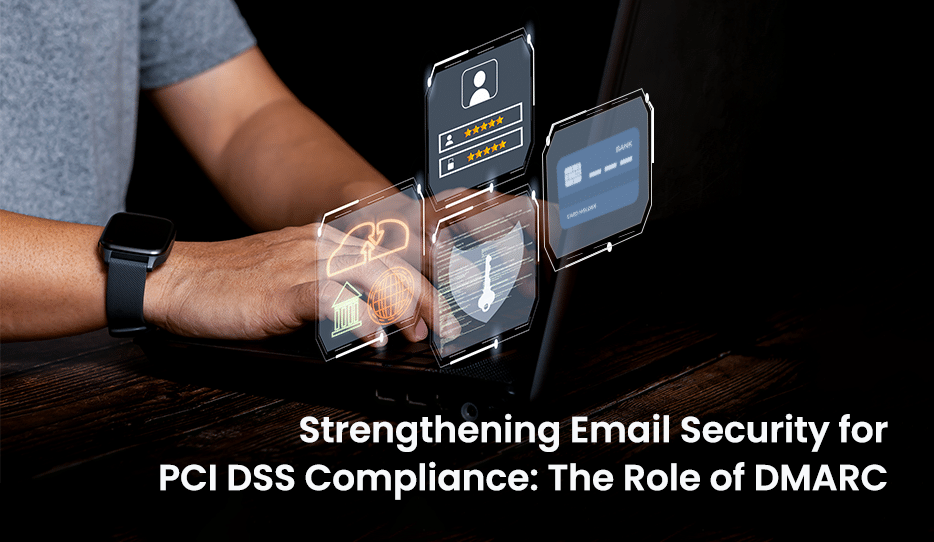
PCI DSS (Payment Card Industry Data Security Standards) is a set of vital regulations that companies dealing with cardholder information must adhere to. Email communication plays a crucial role for these companies, making secure email authentication an essential aspect of PCI DSS compliance.
PCI DSS overview
PCI DSS is a global standard by the Payment Card Industry Security Standards Council (PCI SSC), designed to safeguard cardholder data. With the release of PCI DSS v4.0, email authentication is now a key requirement for organizations handling sensitive cardholder information.
Focus on email security
Email serves as a bridge for internal and external communications in businesses. However, for PCI DSS-covered entities, these emails can contain sensitive payment data. PCI DSS v4.0 emphasizes robust email security to mitigate the risks of unauthorized access, data breaches, and phishing attacks.
DMARC’s significance
Domain-based Message Authentication, Reporting, and Conformance (DMARC) has gained prominence in PCI DSS v4.0. DMARC is a protocol that prevents email spoofing and impersonation. It ensures that both SPF (Sender Policy Framework) and DKIM (DomainKeys Identified Mail) alignment work cohesively to safeguard email infrastructure.
DMARC implementation and benefits
Implementing DMARC aligns with PCI DSS goals, offering numerous benefits:
Phishing and spoofing prevention: DMARC’s monitoring mechanism detects issues before they lead to breaches, fortifying email security.
Improved deliverability: A positive impact on email deliverability is an indirect advantage of DMARC implementation.
Brand trust: DMARC prevents unauthorized senders from using a company’s domain, boosting trust with stakeholders.
DMARC implementation guide:
A step-by-step guide for DMARC implementation tailored for PCI DSS compliance includes:
Assess email infrastructure: Identify systems, domains, and services involved in email exchange.
Develop an implementation plan: Create a plan tailored to your organization’s needs, including milestones and stakeholders.
Configure SPF and DKIM: Align these authentication mechanisms with DMARC for enhanced security.
Set up DMARC: Generate a DMARC record using a tool and set the policy to “none” for initial monitoring.
Report analysis: Use DMARC reports to identify patterns and anomalies in email infrastructure.
Ongoing monitoring: Continuously review and update DMARC policies based on evolving requirements.
PCI DSS compliance is of utmost importance for companies handling cardholder data. Email security, as highlighted in PCI DSS v4.0, now mandates robust measures such as DMARC. While challenges exist, the benefits of DMARC implementation far outweigh the effort. Starting early ensures that organizations are well-prepared for future compliance requirements and strengthens their overall email security posture.